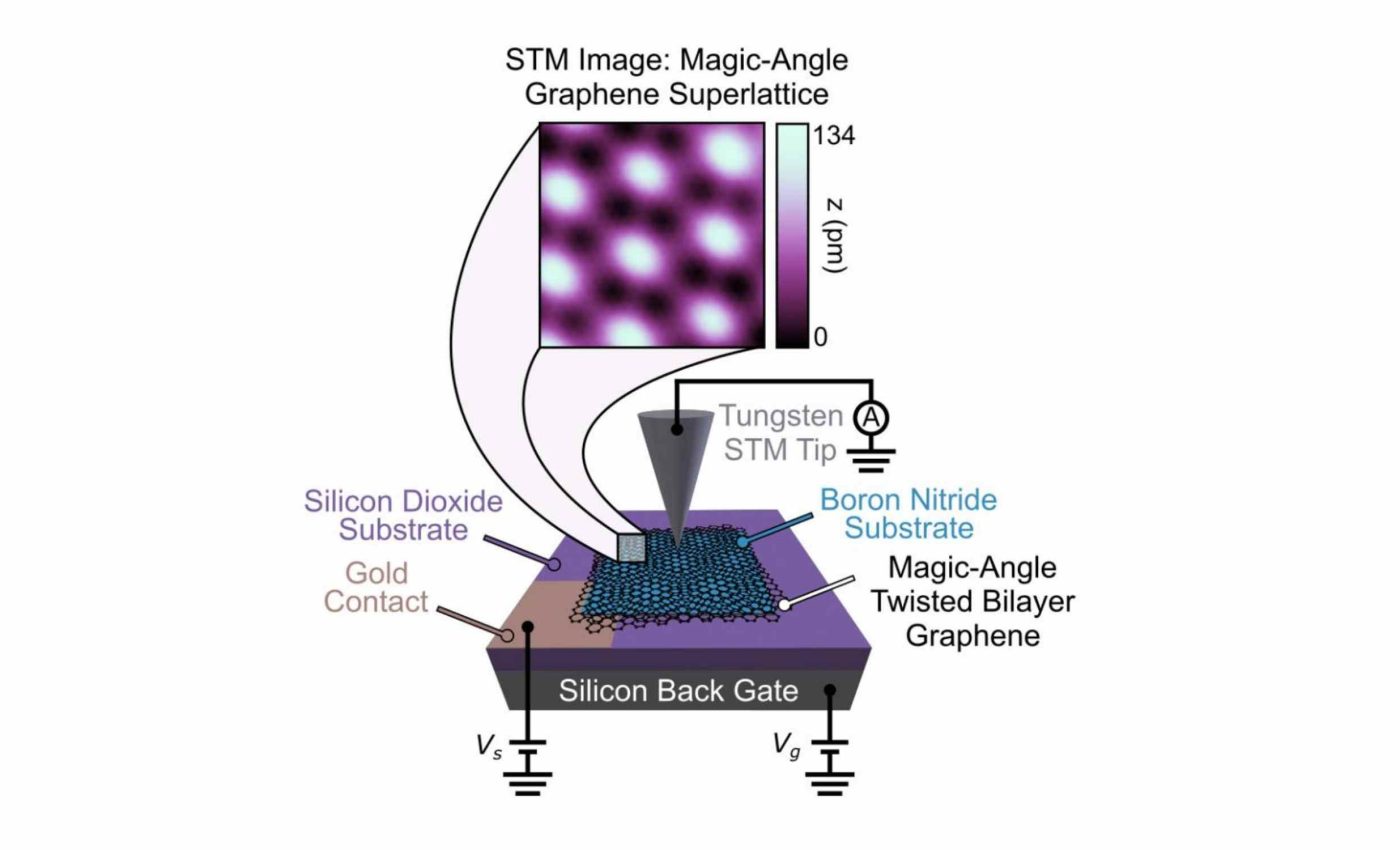
Strange atomic vibration discovered in graphene could solve one of the greatest mysteries in physics
A cryogenic microscope that fits on a laboratory bench has now let scientists watch electrons shake graphene’s atoms in real time, revealing something called “phasons.”
The work ties those shivers to the zero-resistance current and odd “strange metal” signals that appear when two graphene sheets are rotated by about 1.1° or what’s referred to as the “magic angle.”
Dr. John Birkbeck of the Weizmann Institute of Science is to be credited for leading the new experiments.
Phasons and twisted graphene
Twisted bilayer graphene is celebrated for hosting superconductivity, but its electrons also display the linear-in-temperature resistivity that defines a strange metal.
Those two features usually live in very different materials, so seeing them together puzzles theorists.
In graphene’s flat bands, electrons move sluggishly, which magnifies every subtle interaction. One crucial interaction couples electrons to phonons, quantized vibrations that carry lattice energy.
Until now, measuring how each phonon influences electrons meant averaging over many modes. The new microscope instead locks onto a single vibration at a chosen momentum, letting scientists map the entire electron-phonon coupling landscape.
Doing so revealed an unanticipated actor, the phason, a collective ripple that shifts the Moiré lattice itself. Its discovery breaks the long-held notion that only conventional acoustic or optical phonons matter in these structures.
What makes a phason special
A phason slides the two graphene layers against each other in opposite directions. Unlike ordinary acoustic modes whose coupling fades as wavelength grows, the phason’s grip on electrons strengthens at longer wavelengths.
That upside-down behavior means the phason can scatter slow carriers even when its own energy is just a few millielectronvolts.
In the microscope, the phason announced itself as an inelastic step in conductance that grew taller as the twist angle approached the magic value.
“Our technique not only measures the phonon spectrum but also quantifies how strongly electrons couple to each phonon mode,” said Dr. Birkbeck.
The team also saw the phason’s energy collapse toward zero near 6°, while the coupling soared, a sign that this mode could seed both resistivity and pairing.
Building a quantum twisting microscope
Two years earlier the group debuted a room-temperature version of the quantum twisting microscope. Now they cool the device to 4 Kelvin and add nanometer-precise rotation so that electrons can tunnel between aligned patches of graphene.
During tunneling an electron may give up energy to emit a vibration. By sweeping bias voltage, the researchers dictate that emission energy, while the twist angle selects momentum, letting them scan the entire vibration map.
The tip itself is another atom-thin conductor held against a sample only a few hundred nanometers wide. Self-cleaning by van der Waals forces removes contaminants, ensuring that every change in current stems from the quantum states, not dirt.
“It can detect any excitation coupled to tunneling electrons,” noted Jiewen Xiao, also at the Weizmann Institute, stressing the method’s reach beyond phonons.
Unusual clues to superconductivity
Classical theories predict that phonon coupling weakens for low-energy acoustic modes, making them unlikely glue for electron pairs.
Graphene’s phason defies that rule, delivering a coupling constant λ (“λ” indicates the wavelength of any wave) that climbs roughly with the inverse of its momentum.
Because the phason’s energy falls below 10 meV near the magic angle, it can scatter carriers even at a few degrees above absolute zero, the temperature where superconductivity emerges.
That low energy also rules it in as a supplier of “Planckian” dissipation seen in strange metal transport.
Optical modes at 160 mV showed conventional behavior, but their coupling strength, around 0.30 eV, remains high enough to compete with the phason.
Together they could build a multi-channel pairing mechanism unlike the single-phonon scenario in classic Bardeen-Cooper-Schrieffer (BCS) theory.
“Significant progress in our understanding of these fundamental modes in quantum materials will come shortly,” said co-author Alon Inbar, pointing to the microscope’s ability to dissect each contribution.
Looking toward quantum devices
Understanding electron-vibration coupling helps engineers predict stability limits for future devices that rely on twisted stacks.
A stronger phason coupling hints at enhanced sensitivity to thermal fluctuations, which may limit processor clock speeds or sensor resolution.
Yet the same coupling could inspire tunable quantum circuits: adjusting layer twist offers a mechanical dial for interaction strength, potentially replacing chemical doping.
The cryogenic microscope now provides the feedback needed to design such circuits without guesswork.
Beyond graphene, many van der Waals materials exhibit flat bands, small Fermi surfaces, and collective excitations with comparable velocities.
The microscope’s momentum-resolved spectroscopy can therefore test phasons, plasmons, magnons, or spinons in hosts ranging from transition metal dichalcogenides to magnetic heterostructures.
Early proposals include inserting an insulating crystal between two conducting layers so that tunneling electrons illuminate neutral modes inside the separator itself.
Phasons and the next spin
Can the phason alone explain superconductivity, or does it merely assist higher-energy phonons? Future measurements below the first magic angle may resolve that debate by directly tracking the pairing onset as coupling grows.
Another challenge is to model how lattice relaxation and disorder damp the phason at low energies.
Numerical work suggests the mode may broaden, but the microscope’s energy resolution of a few tenths of a millielectronvolt should capture any broadening and quantify its impact.
The study is published in Nature.
—–
Like what you read? Subscribe to our newsletter for engaging articles, exclusive content, and the latest updates.
Check us out on EarthSnap, a free app brought to you by Eric Ralls and Earth.com.
—–













